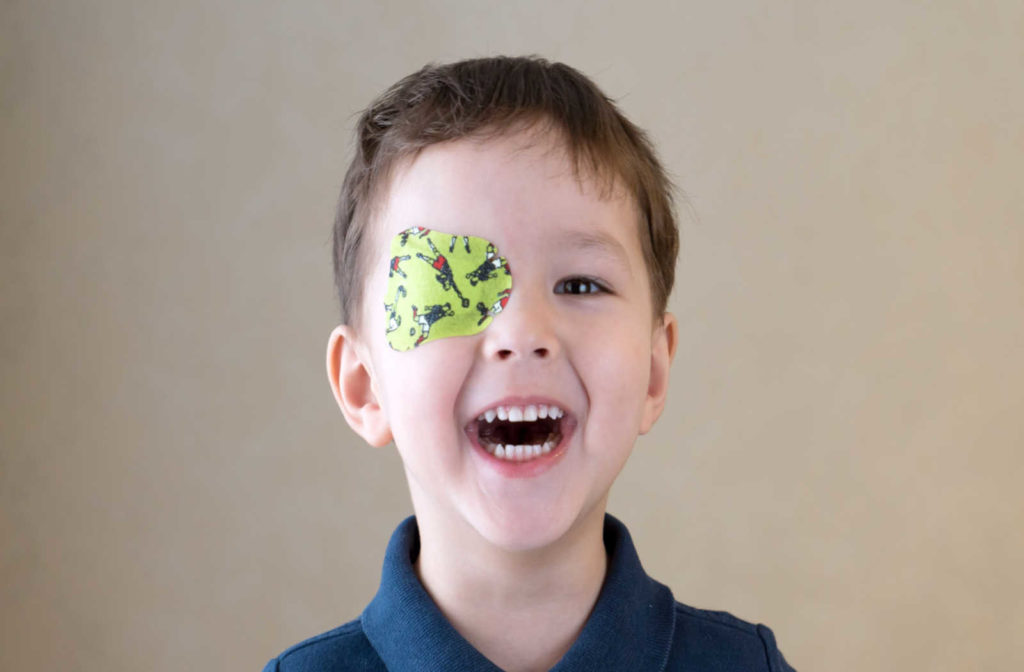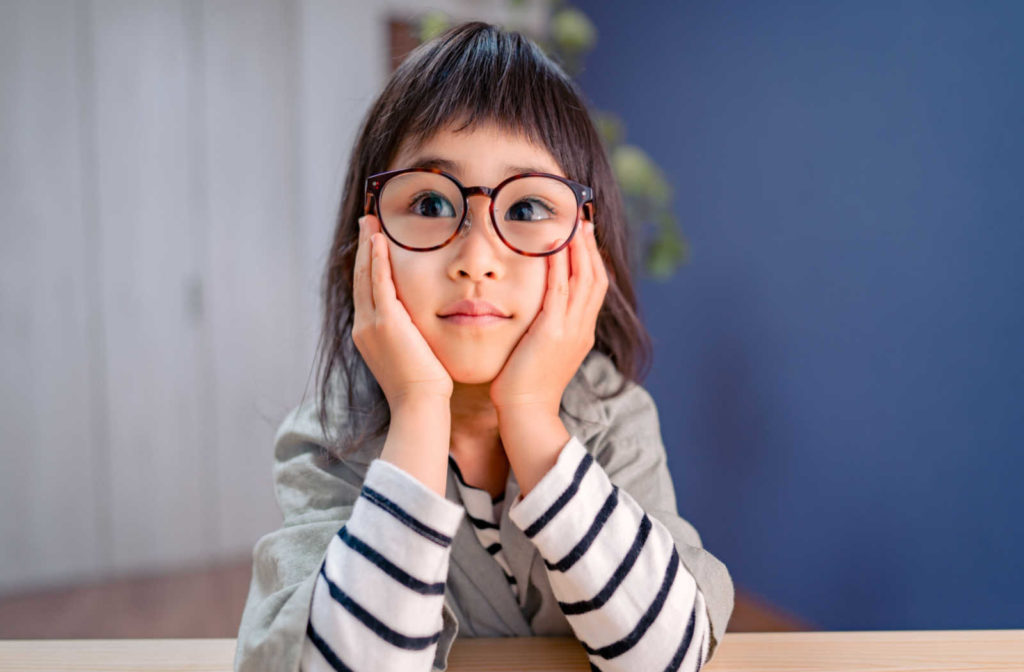When a child develops a lazy eye, it’s best to treat it as soon as possible. However, it is common to have a lazy eye throughout the teenage years and into adulthood. When treating this condition, when is it too late for treatment to be effective?
Continue reading to learn about lazy eyes, including when it’s too late to treat this condition.
What Is a Lazy Eye?
A lazy eye is a common way to describe amblyopia, which occurs when one eye doesn’t see as well as the other, even when wearing glasses. This condition typically happens when there’s an obstacle to proper vision development in childhood, causing the brain to favour one eye over the other.
The brain relies on information from the stronger eye, while the vision in the other eye weakens. The underlying cause of amblyopia is typically present at very early ages, but commonly only becomes noticeable to parents and children between ages 6 to 9. If this condition is left untreated, vision in the weaker eye can worsen until the brain ignores images from it.
If your child has amblyopia, they likely won’t notice it because their dominant eye takes over visual tasks. Keep an eye out for signs your child has amblyopia, such as:
- Having trouble with depth perception
- Squinting or shutting one eye
- Tilting their head to see
- Disinterest or difficulty reading or writing
What Causes a Lazy Eye?
Anything obstructing vision in either eye during a child’s development can lead to amblyopia. The obstruction causes the brain to suppress images coming from the weakened eye. A common misconception is that an eye turned in or out is a lazy eye. However, the most common cause of amblyopia comes from one eye seeing very well, while the other eye is blurred from needing a significant glasses correction.
While this condition isn’t preventable, eye doctors can identify it as early as possible during a comprehensive eye exam. Children should have eye exams early in childhood to help diagnose this condition.
Is a Lazy Eye Blind?
While one eye is weaker when you have amblyopia, this eye isn’t blind. It can see an image, but this image is blurry. Amblyopia typically affects central (straightforward) vision more than side vision.
Is It Ever Too Late to Treat a Lazy Eye?
While treatment for amblyopia is ideal and more successful before the age of 5, anyone at any age can benefit from treatment. It’s best to address amblyopia well before the age of 5 because the connections between the eyes and brain are still developing.
Treatment past this age is possible but less effective because these connections have formed. Approximately 50% of children between 7 to 17 years old respond well to treatment. An eye doctor can recommend the best treatments for a patient based on age and vision needs.

Treating a Lazy Eye
Your eye doctor has 2 main objectives when addressing amblyopia: treating the underlying eye problem and improving the vision of the weaker eye. Amblyopia treatment is most effective for younger children, but any age can benefit from these treatments.
Some ways to address amblyopia include eye patches, glasses, atropine eye drops, and vision exercises.
Eye Patches
One treatment for amblyopia involves forcing the weaker eye to work more effectively. An eye patch helps with this, covering the stronger eye, so the brain has to use the weaker eye it ignores. The brain then relies on information from the weaker eye, improving its vision.
You usually wear an eye patch for several hours every day. However, your eye doctor may recommend more or less time depending on your vision needs.
Glasses
Sometimes, glasses can be a simple solution for amblyopia, treating the underlying eye problem affecting vision. They can treat several refractive errors, including myopia, hyperopia, and astigmatism.
When treating this cause of amblyopia, an eye doctor has the patient always wear their glasses. Wearing glasses all day helps an optometrist assess how effectively the glasses are helping improve vision in the weaker eye. While glasses can help, other treatments are typically needed.
Atropine Eye Drops
Atropine eye drops have many uses for your eyes, including dilating the eyes during an eye exam and treating certain eye conditions. Additionally, these drops can help improve the vision of a lazy eye. Your optometrist can use atropine eye drops to blur vision in the unaffected eye, similar to wearing a patch over the good eye.
The eye drops blur the vision of the stronger eye and forces the weaker eye to work harder, helping treat this condition. Atropine eye drops work similarly to eye patches.
Vision Exercises
Specific vision exercises known as orthoptics can help treat amblyopia. A doctor has a patient cover their stronger eye with a patch and stimulate the weaker eye with challenges that help improve vision, strengthening the weaker eye.
Typically used for children, some possible exercises include:
- Colouring
- Dot-to-dot drawing
- Word games
- Building with Lego
After some strength has returned to the eye, the doctor may provide at-home exercises to help the eyes work together more effectively.
Surgery
When the underlying cause obstructing the vision is a wandering eye (i.e. a muscle problem) or a cataract the child is born with, your optometrist will refer your child to a pediatric ophthalmologist who can evaluate surgical treatments that may be needed.
There’s Always Time to Improve Your Vision
Amblyopia treatment is ideal for children because their vision is still developing. However, you don’t need to be a kid to treat a lazy eye—any age can benefit from treatment. Your eye doctor can create a customized treatment plan to help improve vision in your weaker eye.
Your eye doctor is here to help, recommending a customized treatment plan to help improve your vision. Contact your optometrist at Discover Eyecare if you or your child has amblyopia.



